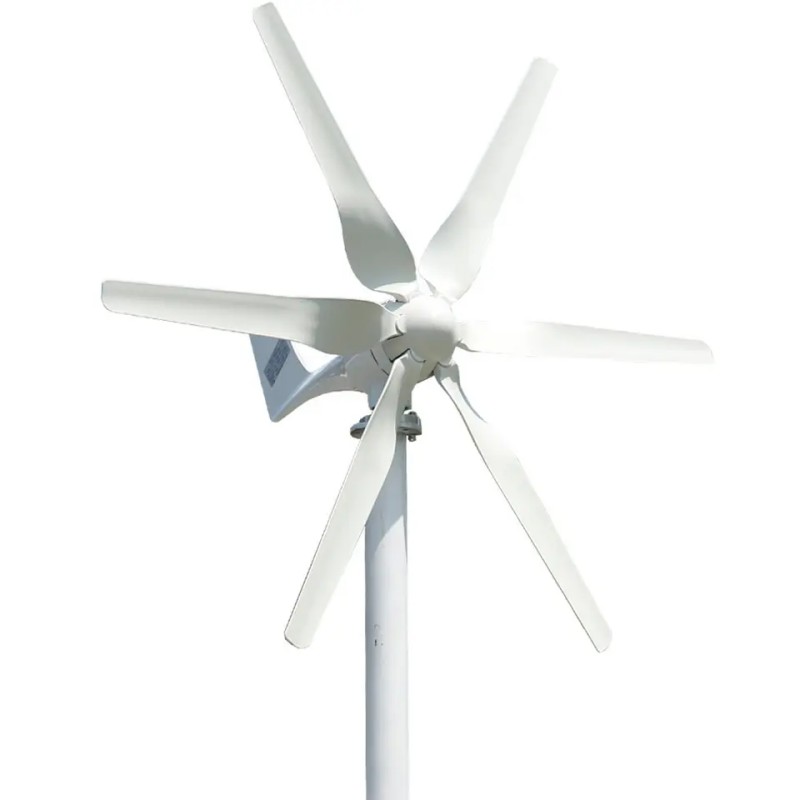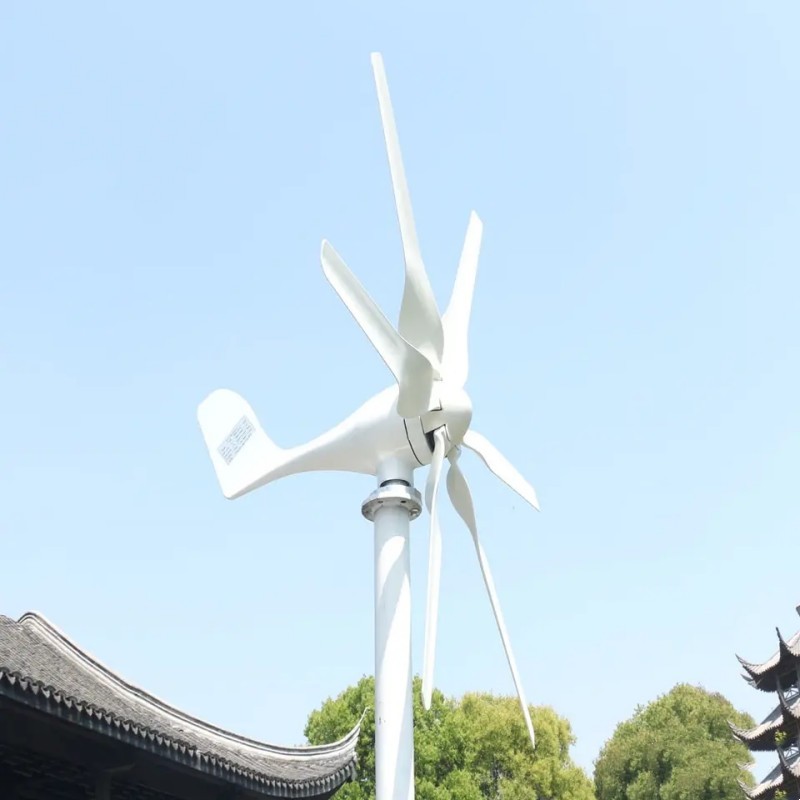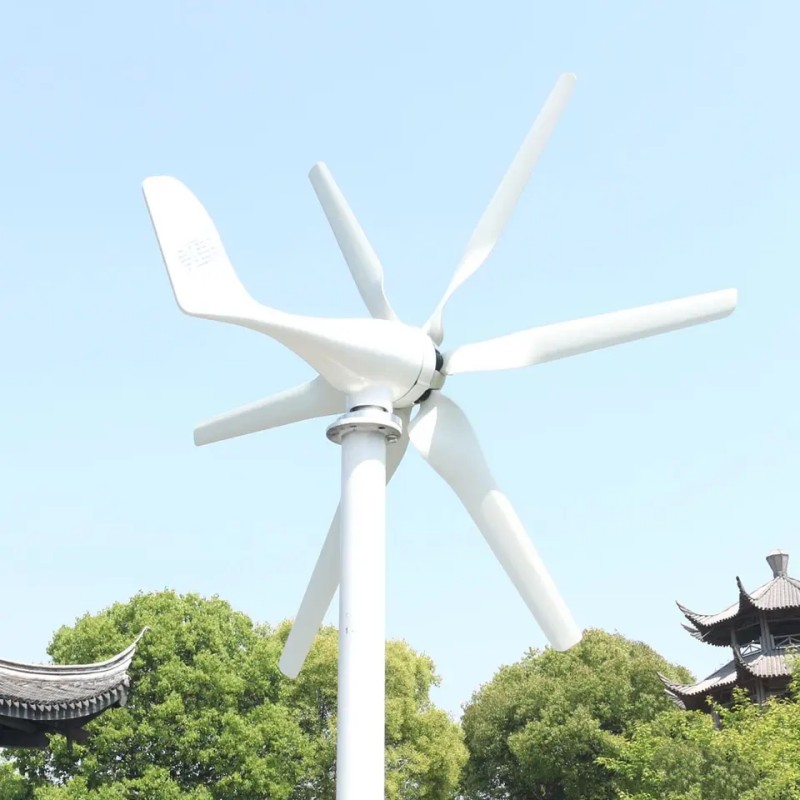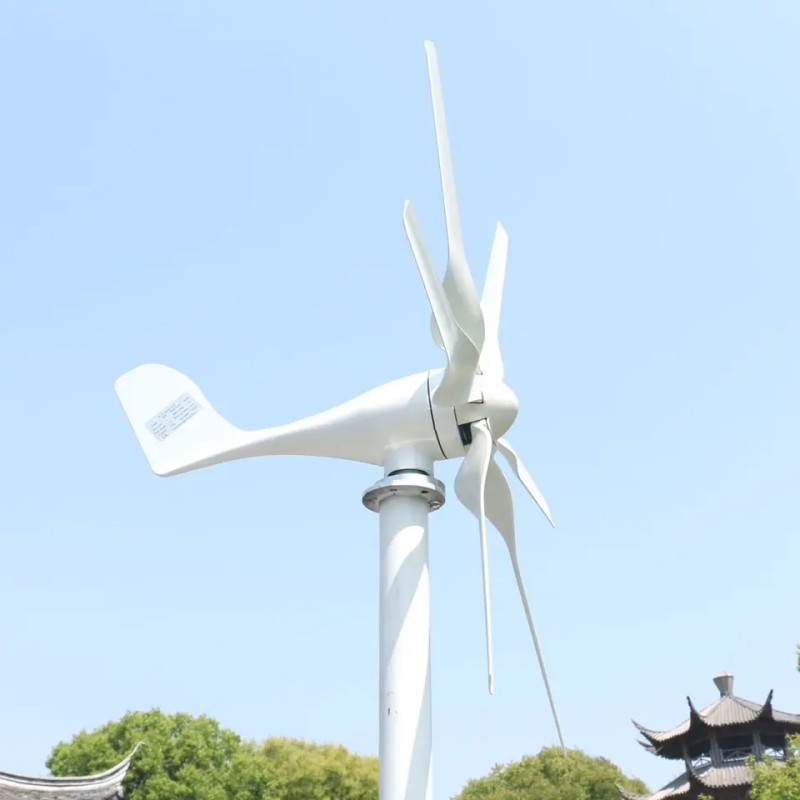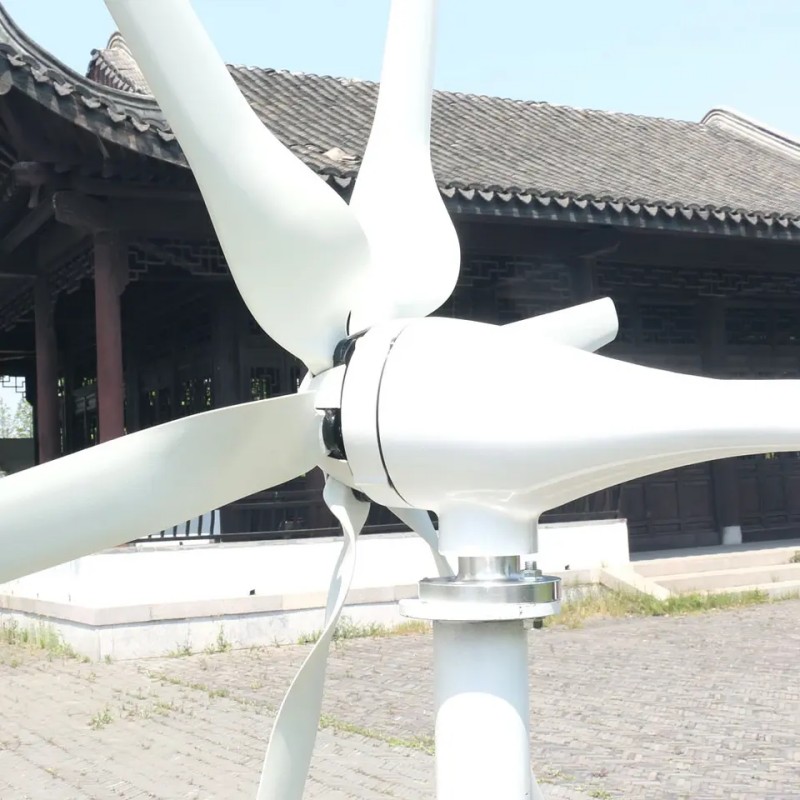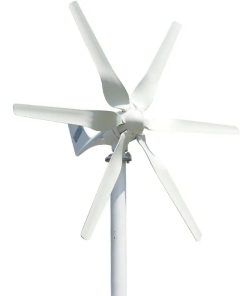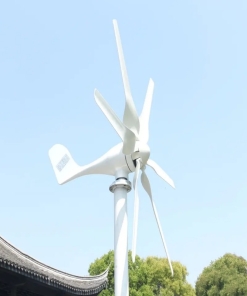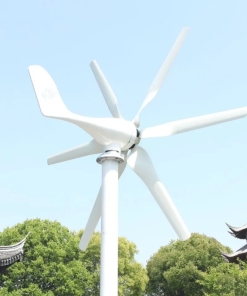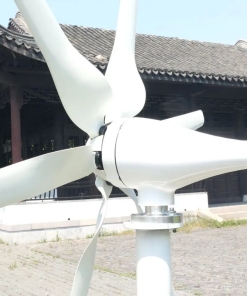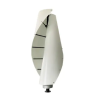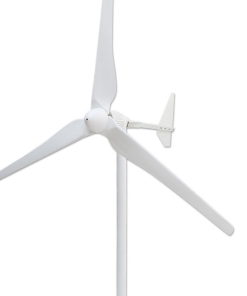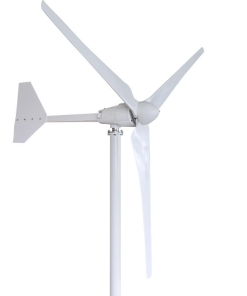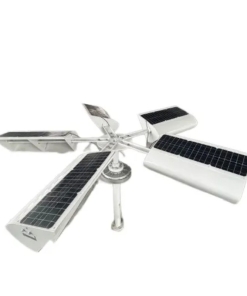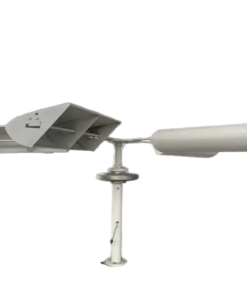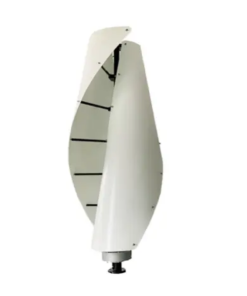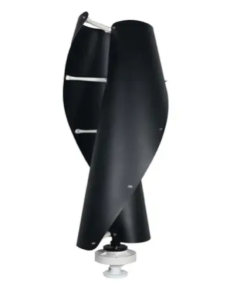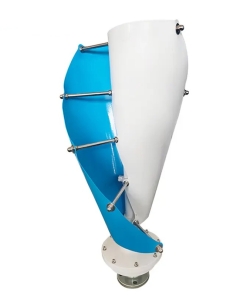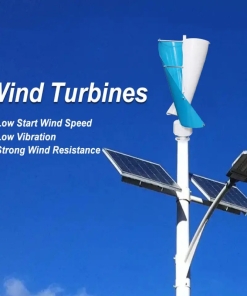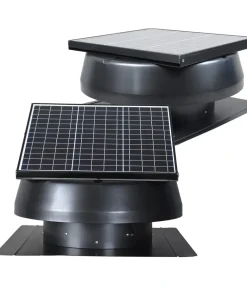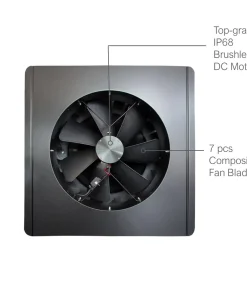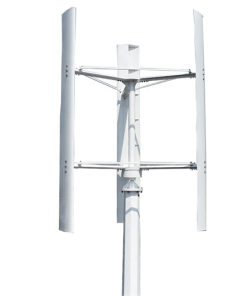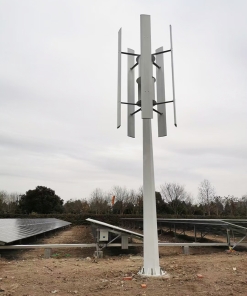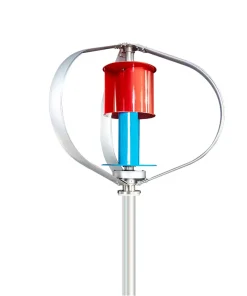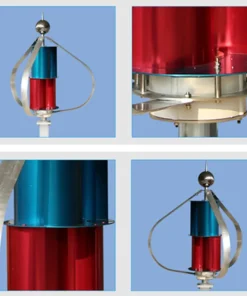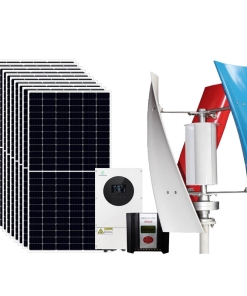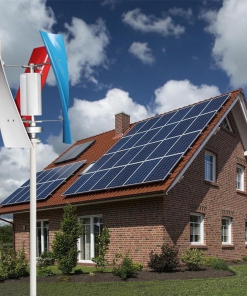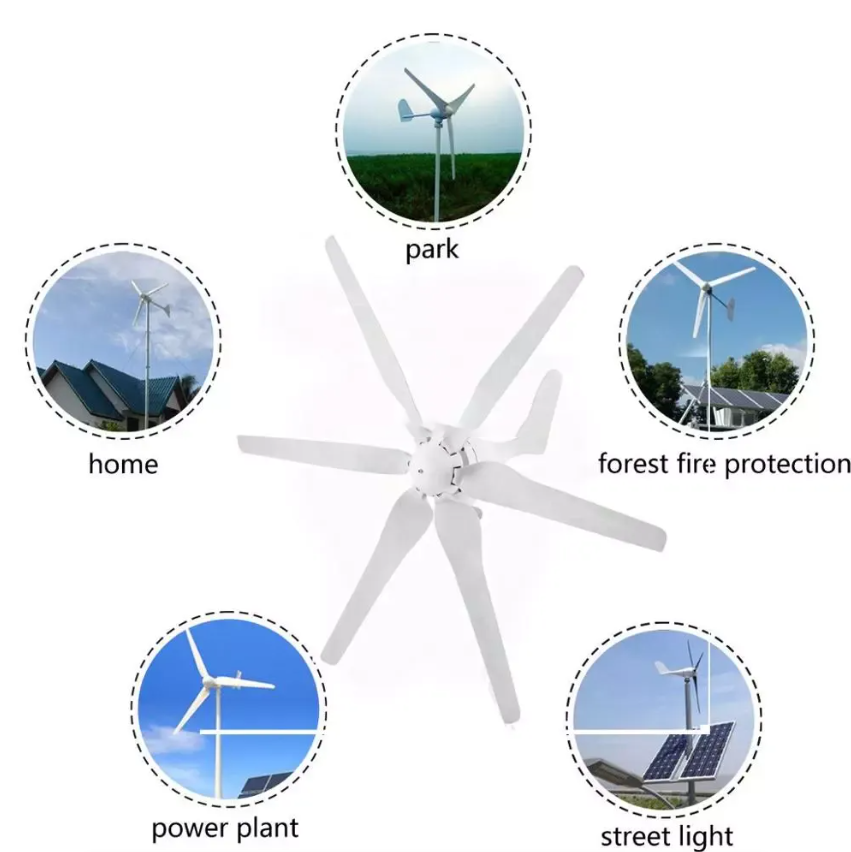
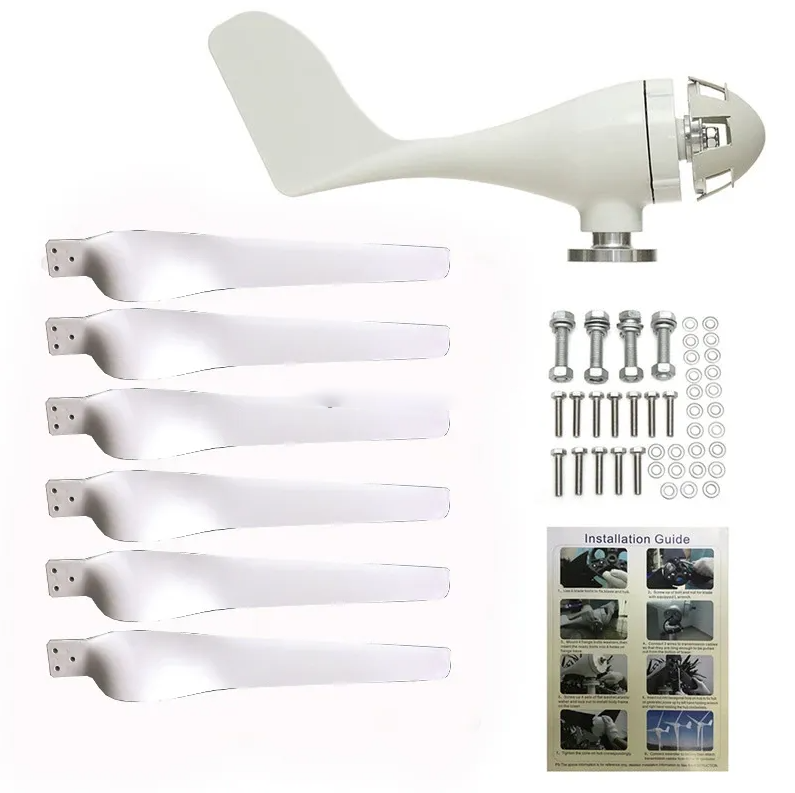

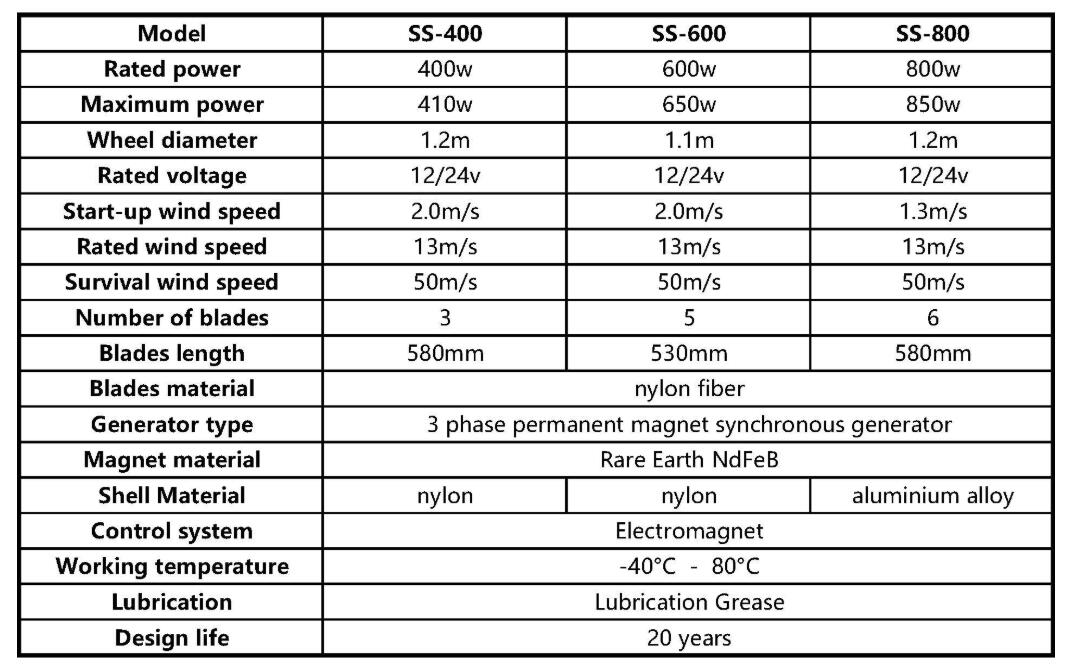
Features
1.Low start up speed, 6 blades ,high wind energy utilization.
2.Easy installation, tube or flange connection optional.
3.Blades using new art of precision injection molding,matched with optimized aerodynamic shape and structure,which enhance the wind energy utilization and annual output.
4.Body of casting aluminum alloy, with 2 bearings swivel , making it survive stronger wind and run more safely.
5.Patented permanent magnet ac generator with special stator,effectively reduce torque,well match the wind wheel and generator, and ensure the performance of whole system.
6.Controller,inverter can be matched accroding to customers’ specific needs
ADVANTAGES OF OFF-GRID SOLAR SYSTEMS
1. NO ACCESS TO THE UTILITY GRID
Off-grid solar systems can be cheaper than extending power lines in certain remote areas.
Consider off-gird if you’re more than 100 yards from the grid. The costs of overhead transmission lines range from $174,000 per mile (for rural construction) to $11,000,000 per mile (for urban construction).
2. BECOME ENERGY SELF-SUFFICIENT
Living off the grid and being self-sufficient feels good. For some people, this feeling is worth more than saving money.
Energy self-sufficiency is also a form of security. Power failures on the utility grid do not affect off-grid wind systems.
On the flip side, batteries can only store a certain amount of energy, and during cloudy times, being connected to the grid is actually where the security is. You should install a backup generator to be prepared for these kinds of situations.
Installation tips for wind turbines
Wind turbines are a promising source of renewable energy. However, installing them can be a complicated process. Here are a few tips to help ensure successful installation of a wind turbine.
1. Site selection:
The ideal location for a wind turbine is an open area with constant wind flow. It is important to take into account factors such as surrounding terrain, proximity to overhead power lines, and zoning regulations. Consult with an expert to determine the best location for your wind turbine.
2. Foundation:
The foundation is a crucial component of the wind turbine. A strong foundation will ensure that your wind turbine is stable and secure. The type of foundation required will depend on the location and size of the turbine. Consult with a professional to ensure the proper foundation is installed.
3. Tower installation:
Wind turbine towers need to be installed upright and secured to the foundation. The installation of the tower should be done carefully to ensure stability and safety. Always follow the manufacturer’s instructions and consult with an expert for guidance.
4. Wiring:
Wiring the turbine to the grid is an important step. This should be done by a licensed professional and in compliance with local regulations and safety codes. Proper wiring will ensure that the electricity generated by the turbine is safely transferred to the grid.
5. Maintenance:
Maintenance of the wind turbine is essential to ensure its optimal performance. Regular inspections and cleaning of the blades, hub, and tower are crucial. Consult with the manufacturer for specific maintenance instructions and schedule routine maintenance visits with a professional.
In summary, installing a wind turbine can be complex and requires specialized knowledge and expertise.
